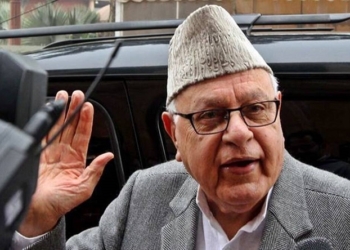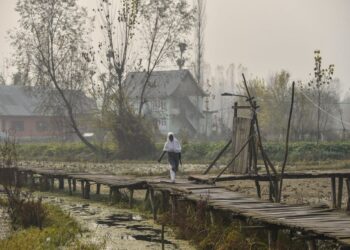
Riyaz Wani
At a time when Jammu and Kashmir and the country are pre-occupied with fighting the Covid-19 pandemic, five soldiers and five militants lost their lives in a hand to hand combat in Operation Randori Behak in Keran sector near Line of Control in North Kashmir on 5th of April. On receiving the information about an infiltrating group of militants, Army flew its soldiers to the spot to take them on. It was a difficult hilly terrain, still heavily snowbound, making it initially difficult to track the militants down.
The operation is the biggest in Kashmir since the revocation of Article 370 in Kashmir in August last. Security forces haven’t suffered such a huge loss in an encounter in a long time. Also, the encounter has taken place at a time when militancy in Kashmir had been giving all indications of being in retreat. According to police estimate there are around 250 active militants in Kashmir, of which around forty have been killed since January. Besides, recent months have witnessed a drop in Kashmiri youth taking to arms that was expected to lead to a progressive dwindling of the number of militants.
But Keran encounter has turned these calculations on their head. It has made it clear that the militancy is here to stay as the infiltration remains an ongoing phenomenon, the hi-tech border fencing notwithstanding. And the militants that are crossing over are highly trained and battle-hardened, considering the fact that they killed four paratroopers who are alleged to have participated in September 2016 surgical strike against Pakistan. What is also important is that the two of the militants are reported to be Kashmiris from Kulgam and Shopian districts. In fact, three families in South Kashmir have claimed three of the five militants, saying police had informed them that they were their wards after identifying them from their dairies or identity cards.
If that be so, it shows that Kashmiri youth are once again crossing the border for arms training in Pakistan or Pakistan controlled Kashmir, a phenomenon that had all but stopped over the past decade. The youth would join militancy and train locally. But these armed youth have had little more than a symbolic value as their rudimentary training often makes them sitting ducks for the security personnel in encounter after encounter. But that Kashmiris are once again seeking an advanced arms training across the border, should be a cause for grave concern for the security agencies.
Import of Keran encounter, however, goes beyond Kashmiri youth crossing over for training, and also beyond its heavy toll. Its significance lies in that the militancy in the Valley is not a lost cause that it was expected to be in the wake of nullification of J&K autonomy – doing so, may have, on the contrary enhanced the rationale for an armed struggle. That infiltration is taking place regardless and the militants who are coming include Kashmiris should make the authorities take note. And if the influx of militants continues, as looks likely, it could confront New Delhi with a formidable challenge in the months to come. As it is, the Covid-19 pandemic hasn’t stopped the flow and the melting snow along the LoC is likely to give fillip to these arrivals.
What would be interesting to see is if more Pakistan based militants join the battle in Kashmir. Ever since the new wave of the local militancy triggered by the advent of Burhan Wani in 2015, Kashmiri militants have general outnumbered their foreign counterparts. Any considerable change in the ratio in favour of the foreigners could dramatically change the landscape of militancy in Kashmir. As of now, however, much of this scenario is in the realm of speculation. But Keran encounter has made this prospect a more realistic proposition than it otherwise would have been.
Follow this link to join our WhatsApp group: Join Now
Be Part of Quality Journalism |
Quality journalism takes a lot of time, money and hard work to produce and despite all the hardships we still do it. Our reporters and editors are working overtime in Kashmir and beyond to cover what you care about, break big stories, and expose injustices that can change lives. Today more people are reading Kashmir Observer than ever, but only a handful are paying while advertising revenues are falling fast. |
| ACT NOW |
| MONTHLY | Rs 100 | |
| YEARLY | Rs 1000 | |
| LIFETIME | Rs 10000 | |










